-
New UNEP Report Explores Environment’s Links to Conflict, Peacebuilding
›March 10, 2009 // By Will Rogers “Integrating environment and natural resources into peacebuilding is no longer an option—it is a security imperative,” says a new report from the UN Environment Programme (UNEP), From Conflict to Peacebuilding: The Role of Natural Resources and the Environment (to be launched by Achim Steiner, executive director of UNEP, at a March 24, 2009, event at the Wilson Center). A joint product of UNEP and UNEP’s Expert Advisory Group on Environment, Conflict and Peacebuilding, the report was co-authored by Richard Matthew of the University of California, Irvine, Oli Brown of the International Institute for Sustainable Development, and David Jensen of UNEP’s Post-Conflict and Disaster Management Branch. Though environmental conditions are rarely – if ever – the sole precipitator of violent conflict and war, they do play an important role as a “threat multiplier which exacerbates existing trends, tensions and instability” that can ultimately lead to conflict.
“Integrating environment and natural resources into peacebuilding is no longer an option—it is a security imperative,” says a new report from the UN Environment Programme (UNEP), From Conflict to Peacebuilding: The Role of Natural Resources and the Environment (to be launched by Achim Steiner, executive director of UNEP, at a March 24, 2009, event at the Wilson Center). A joint product of UNEP and UNEP’s Expert Advisory Group on Environment, Conflict and Peacebuilding, the report was co-authored by Richard Matthew of the University of California, Irvine, Oli Brown of the International Institute for Sustainable Development, and David Jensen of UNEP’s Post-Conflict and Disaster Management Branch. Though environmental conditions are rarely – if ever – the sole precipitator of violent conflict and war, they do play an important role as a “threat multiplier which exacerbates existing trends, tensions and instability” that can ultimately lead to conflict.
Environmental factors can play a pivotal role along all points of the conflict continuum—from the outbreak of conflict, to the perpetuation of conflict, to the collapse of peace and return to violence. “Attempts to control natural resources or grievances caused by inequitable wealth sharing or environmental degradation can contribute to the outbreak of conflict,” the report says. In Darfur, for example, “water scarcity and the steady loss of fertile land are important underlying factors” that have combined with ethnic rivalry, human and livestock population growth, and weak governance to contribute to conflict.
Exploitation of natural resources also played a substantial role in financing and sustaining conflicts in Sierra Leone, Liberia, Angola, and Cambodia, “transforming war and insurgency into an economic rather than purely political activity.” Economic incentives to control valuable natural resources can reinforce political fragmentation, derail a peace process, and even “undermine genuine political reintegration and reconciliation” after peace has been forged.
Not only can natural resources help precipitate violence, conflict can also affect natural resources, destroying people’s livelihoods and perpetuating the conflict cycle. During conflict, the environment can be transformed into a weapon of war that can endanger human health and disrupt and destroy livelihoods—as when wells are poisoned or crops are burned, for example. Environmental destruction disrupts “normal socio-economic patterns,” forces “populations to adopt coping strategies, and often leads to internal displacement or migration to neighboring countries.” And conflict can erode or destroy state institutions and civil society, exacerbating grievances (or creating new ones) and furthering the resource exploitation that fuels the conflict.
Successful peacebuilding therefore requires that “environmental drivers are managed, that tensions are defused, and that natural assets are used sustainably to support stability and development in the long term.” According to the report, successfully integrating natural resource and environmental issues into conflict prevention and peacebuilding strategies requires the United Nations and international community to:- Improve the capacity for early warning and action “in countries that are vulnerable to conflict over natural resources;”
- Implement economic sanctions and develop new legal strategies to improve “oversight and protection of natural resources during conflicts” to minimize their use in financing and sustaining conflict;
- Address natural resource and environmental issues in the initial peacemaking and peacekeeping processes;
- Incorporate natural-resource and environmental issues into integrated peacebuilding strategies in order to avoid a relapse into conflict;
- Help countries use their natural resources to promote economic growth, while practicing good governance and environmental sustainability; and
- Promote confidence building and cooperation between conflicting groups that have shared interests over natural resources and the environment.
-
Mind the Gap: Forging a Consensus on Security and Climate Change in EU and US Foreign Policy
›March 5, 2009 // By Will Rogers “There are political and economic vulnerabilities that are in fact more important—or seem more important—to the participants of conflict than the physical vulnerability to climate change,” said Clionadh Raleigh at the February 19, 2009, event, “Climate Security Roundtable: U.S. and EU Research and Policy.” Raleigh, a lecturer at Trinity College Dublin, was joined by Nick Mabey, founding director and chief executive of E3G, and Sharon Burke, a senior fellow at the Center for a New American Security, to discuss climate change’s impact on conflict and how the United States and European Union (EU) have begun to adapt their foreign and security policies to the threat of climate change.
“There are political and economic vulnerabilities that are in fact more important—or seem more important—to the participants of conflict than the physical vulnerability to climate change,” said Clionadh Raleigh at the February 19, 2009, event, “Climate Security Roundtable: U.S. and EU Research and Policy.” Raleigh, a lecturer at Trinity College Dublin, was joined by Nick Mabey, founding director and chief executive of E3G, and Sharon Burke, a senior fellow at the Center for a New American Security, to discuss climate change’s impact on conflict and how the United States and European Union (EU) have begun to adapt their foreign and security policies to the threat of climate change.
Ecological Change, Migration, and Conflict: A Complex Story
“The lack of access to power for certain communities, certain ethnic groups in sub-Saharan Africa, and basic access to resources among the most vulnerable populations has led to people misinterpreting the relationship that ecological change plays in their decision to either participate in conflict or to migrate,” Raleigh said. Although Raleigh’s research, which examined civil conflicts from 1990 to 2004, found that population density and growth were related to higher risks of conflict, “environmental pressures were not more likely to cause conflict in poor states—and not more likely during periods of instability,” she concluded. “Social, political, and economic factors are the most important determinants of civil war within developing countries,” she emphasized. “Poverty and unequal development come up time and time again.”
According to Raleigh, fears of mass international migration in response to climate change are overplayed. “Individuals and communities have quite a lot of coping mechanisms to deal with ecological difficulty,” including migration from rural to urban areas in the same country, she explained. Most migration, including labor and distress migration, “is temporary, internal, and circular,” she emphasized. “There is very little to no evidence that there will be an increase in international migration” in response to ecological change, although “there is evidence that there will be an increase in internal migration.”
Climate Change and Security: Perspectives from the EU “Climate change is serious,” emphasized Mabey. “It’s a threat multiplier, it will make unstable places less stable—it’s going to change strategic interests, alliances, borders, threats, economic relationships, comparative advantages, the nature of international relations, and the legitimacy of the UN.” In the future, “security policy will need to get more preventive and risk-based because climate change just injects a huge bolt of uncertainty into the future,” said Mabey. He urged the expansion of forward-looking information systems that provide policymakers with the data they need to make decisions at the geopolitical, strategic, and operations levels. He also said security experts should strive to communicate the potential consequences of climate change to decisionmakers.
“Climate change is serious,” emphasized Mabey. “It’s a threat multiplier, it will make unstable places less stable—it’s going to change strategic interests, alliances, borders, threats, economic relationships, comparative advantages, the nature of international relations, and the legitimacy of the UN.” In the future, “security policy will need to get more preventive and risk-based because climate change just injects a huge bolt of uncertainty into the future,” said Mabey. He urged the expansion of forward-looking information systems that provide policymakers with the data they need to make decisions at the geopolitical, strategic, and operations levels. He also said security experts should strive to communicate the potential consequences of climate change to decisionmakers.
The EU has taken steps to integrate climate change into its security strategy; Great Britain, Germany, and Denmark have taken the lead. The Arctic has been a particular focus, with security experts examining trade routes, maritime zones, and new access to resources. Climate change “is not all about instability” in fragile, impoverished states, Mabey explained. “The Arctic is by far the most important climate security issue in the minds of traditional foreign-policy types in Europe.”
Environmental Security Gets a New Tool: The Climate War Game Last year, Burke helped conduct a climate change war game based on a scenario of extreme weather events like droughts, wildfires, and cyclones. “Every country sort of hewed to what you would expect,” said Burke of the high-profile participants from China, India, Europe, and the United States. “The EU team spent the first two hours debating whether they could really be a country; the Indian team instantly came up with a negotiating strategy that sounded cooperative and brilliant but was completely impossible to execute; the Chinese team was, ‘No, we’re not going to do anything unless you pay us’; and the American team was keen to lead, only nobody was following.” One of the key lessons from the game, Burke explained, was that “everything comes down to what China is prepared to do.”
Last year, Burke helped conduct a climate change war game based on a scenario of extreme weather events like droughts, wildfires, and cyclones. “Every country sort of hewed to what you would expect,” said Burke of the high-profile participants from China, India, Europe, and the United States. “The EU team spent the first two hours debating whether they could really be a country; the Indian team instantly came up with a negotiating strategy that sounded cooperative and brilliant but was completely impossible to execute; the Chinese team was, ‘No, we’re not going to do anything unless you pay us’; and the American team was keen to lead, only nobody was following.” One of the key lessons from the game, Burke explained, was that “everything comes down to what China is prepared to do.”
In developing the game, Burke and her colleagues discovered “that there’s a vast poverty of the kinds of information that you need to make decisions.” As Burke explained, policymakers need specific data “to obligate large amounts of money and personnel,” and the game revealed that “policymakers don’t have the information they need to make decisions.”
Photos: From top to bottom, Clionadh Raleigh, Nick Mabey, and Sharon Burke. Courtesy of Dave Hawxhurst and the Woodrow Wilson Center. -
In Land Grab, Food Is Not the Only Consideration
›March 3, 2009 // By Will Rogers Global cereal production – including stable items like wheat, coarse grains, and rice – is projected to shrink in 2009 due to drought and adverse weather in the world’s major producers. With shrinking food stocks, a growing demand for biofuels, and a need for cheaper sources of raw materials like rubber and other natural resources, governments and corporations in many developed countries are seeking to secure access to these coveted commodities by leasing large tracts of land in developing countries.
Global cereal production – including stable items like wheat, coarse grains, and rice – is projected to shrink in 2009 due to drought and adverse weather in the world’s major producers. With shrinking food stocks, a growing demand for biofuels, and a need for cheaper sources of raw materials like rubber and other natural resources, governments and corporations in many developed countries are seeking to secure access to these coveted commodities by leasing large tracts of land in developing countries.
In Indonesia, PT Daewoo Logistics Indonesia, a subsidiary of South Korea’s Daewoo Logistics Corporation, and Cheil Jedang Samsung recently announced a partnership to invest US $50 million to grow and process energy crops on the islands of Buru and Samba. The two companies will produce 30,000 tons of corn grain a year on 24,000 hectares and will export their entire production back to South Korea. The announcement comes on the heels of a report from the International Food Policy Research Institute, The Challenge of Hunger: The 2008 Global Hunger Index, that raises concerns about Indonesia’s already precarious food security.
Meanwhile, Saudi investors have been lobbying government officials in the Philippines to grow and export “basmati rice, corn, cassava, sugar, animal fodder, fisheries, red meat, Philippine bananas and mangoes,” reports Neil Morales in BusinessWorld. Philippine officials are hoping to leverage Saudi Arabia’s growing demand for food against the harsh economic climate to boost much-needed foreign direct investment. “Tell me an item that the whole world needs regardless of the economic situation, it is food,” said Peter Favila, the Philippine Trade Secretary, in an interview with BusinessWorld.
But securing food stocks is not the only motive behind the massive leasing of land in developing countries. A surging demand for biofuels to meet energy needs, as well as access to new sources of raw materials for manufacturing goods, appears to be driving recent land grabs. Recently, Sinopec and The Chinese National Overseas Oil Corporation, two state-owned oil giants, made investments of US $5 billion and $5.5 billion, respectively, in Indonesia to grow and process corn into biofuel to be exported to China.
Meanwhile, several Chinese companies have secured deals in Southeast Asia to grow rubber trees so that they can process and export the sap to meet China’s rising manufacturing demands (China is expected to consume 30 percent of the world’s rubber by 2020). In Cambodia, domestic rice fields have been cleared to make way for rubber trees, with nearly all the sap to be exported to China. And in Burma – which according to the UN’s Food and Agriculture Organization is plagued by severe localized food insecurity – concessions have been made to lease land to two Chinese companies to establish rubber plantations. According to Agweek, Burmese “troops are forcibly evicting farmers to make way for rubber plantations.”
Governments in these developing countries should exercise caution when granting land concessions to foreign governments and corporations. Despite the short-term investments, most – if not all – of the production will be exported, making the long-term food security situation even worse in these host countries. And according to a recent report from the U.N. Environment Programme, From Conflict to Peacebuilding: The Role Natural Resources and the Environment, environmental conditions – like severe food insecurity – linked with these poor government policies and claims of “neo-colonialism” could exacerbate existing trends and tensions in the host countries and spark violent conflict.
A recent attempt by South Korea’s Daewoo Logistics Corporation to negotiate a 99-year lease on 3.2 million hectares of farmland in Madagascar has stalled due to severe domestic outcry. Since mid-January, the country has been in a state of emergency; riots have erupted throughout the capital city of Antananarivo, killing, by some estimates, close to 100 and injuring more than 200; and Madagascar’s President Marc Ravalomanana is struggling to maintain power amidst fierce criticism by opposition leaders like Antananarivo Mayor Andry Rajoelina for even considering the deal.
Even with the prospect of political unrest, however, current economic woes will likely dictate policymaking in these developing countries, with short-term payoffs eclipsing the long-term political, social, economic and security consequences.
Photo: In the northeastern coastal city of Tamatave, political unrest has stirred since mid-January over negotiations between the Malagasy government and South Korea’s Daewoo Logistics Corporation to lease nearly half the country’s arable farmland to the company to grow and export food to South Korea. Courtesy of flickr user foko_madagascar.
-
Testosterone: The Ultimate Weapon of Mass Destruction?
›March 1, 2009 // By Will Rogers “The ultimate weapon of mass destruction—and perhaps of economic destruction—is the testosterone molecule,” quipped Malcolm Potts at the February 11, 2009, discussion of his new book, “Sex and War: How Biology Explains War and Offers a Path to Peace,” which explores the pivotal question, “Why do human beings systematically and deliberately kill our own species?” Potts, the Bixby Professor of Population and Family Planning at the University of California, Berkeley, was joined Science magazine’s Ann Gibbons, a leading correspondent on human evolution, who examined whether aggressive human behaviors are evolving in response to changing social structures.
“The ultimate weapon of mass destruction—and perhaps of economic destruction—is the testosterone molecule,” quipped Malcolm Potts at the February 11, 2009, discussion of his new book, “Sex and War: How Biology Explains War and Offers a Path to Peace,” which explores the pivotal question, “Why do human beings systematically and deliberately kill our own species?” Potts, the Bixby Professor of Population and Family Planning at the University of California, Berkeley, was joined Science magazine’s Ann Gibbons, a leading correspondent on human evolution, who examined whether aggressive human behaviors are evolving in response to changing social structures.
Testosterone: Risky Business
“In 1987, some anthropologists and sociologists made a statement at UNESCO that it is scientifically incorrect to say we’ve inherited a tendency to make war from our animal ancestors,” said Potts. “I think that that is wrong.” Evolutionary psychology suggests that humans have inherited certain predispositions that “help us adapt to find food, select mates, avoid danger, and compete for resources in a hostile world,” said Potts. Men compete for women, so it is logical, from a reproductive standpoint, that men would take more risks than women, he argued.
In addition, “there’s strong evidence that there is a genetic tendency for men in the prime of life to attack and kill their neighbors,” Potts noted, while emphasizing that this does not mean that men are preordained to fight one another. “Such predispositions are extraordinarily flexible,” and respond well to peaceful cultural norms.
The Pill Is Mightier Than the Sword
“Once we recognize our violent origins, then we need to ask not ‘why do wars break out?’ but ‘why does peace break out?’” posed Potts. “Judged on the basis of same-species killing,” the violent 20th century may have been the most peaceful in human history, he claimed.
“In the whole of recorded history, I cannot find a single example of women banding together spontaneously and then going out to attack a neighboring group,” maintained Potts. He argued that increasing women’s individual freedom and collective power in civil society and government is the best way to achieve a more peaceful world. More specifically, slowing population growth and promoting more balanced age structures by giving women access to family planning will contribute not just to their own autonomy, but also to long-term peace, he argued.
Evolving To Become Less Aggressive?
“Humans are capable of incredible acts of kindness but also despicable acts of terror,” said Gibbons. “We murder, slaughter, barbeque, and even eat our own species, and we’ve been doing it for a long time.” But it is difficult to determine whether this propensity for aggression is an ancient trait or has more recently evolved. “There are no other human species alive to show us different models for male aggression…so we have look at fossils, DNA, and our closest relatives—the chimpanzees and gorillas,” Gibbons said.
Human aggression may be continuing to evolve. As Gibbons explained, “researchers, as they look at the human genome project—the HapMap Project—have discovered there are many, many genes that have come under natural selection that have evolved in the last 100,000 years, since modern humans spread out of Africa.” Therefore, as warfare becomes less necessary to our daily survival, our species might evolve to become less aggressive. “Are we seeing, in our sexual selection, mates being chosen that are a little less aggressive?” Gibbons asked. “We are still evolving,” she emphasized. “The story isn’t over yet.”Photos: From top to bottom, Malcolm Potts and Ann Gibbons. Courtesy of Dave Hawxhurst and the Woodrow Wilson Center.
-
In Kashmir, No Refuge for Wildlife
›February 20, 2009 // By Will Rogers “Human-animal conflicts have assumed alarming proportions in the region,” Asghar Inayati, a regional wildlife warden in Kashmir, recently told Inter Press Service (IPS) News. Since India and Pakistan gained independence in 1949, both sides have fought for control of the territory. Not only has the decades-long conflict claimed 100,000 lives (by some estimates), it has also displaced animals from their natural habitats, sparking violent encounters with local people and threatening many species’ survival.
“Human-animal conflicts have assumed alarming proportions in the region,” Asghar Inayati, a regional wildlife warden in Kashmir, recently told Inter Press Service (IPS) News. Since India and Pakistan gained independence in 1949, both sides have fought for control of the territory. Not only has the decades-long conflict claimed 100,000 lives (by some estimates), it has also displaced animals from their natural habitats, sparking violent encounters with local people and threatening many species’ survival. -
For Many, Sea-Level Rise Already an Issue
›February 11, 2009 // By Will Rogers Global sea level is projected to rise between 7 and 23 inches by 2100, according to the Intergovernmental Panel on Climate Change (IPCC). Recent melting of the Antarctic ice sheet has prompted geophysicists at the University of Toronto and Oregon State University to warn that global sea level could rise 25 percent beyond the IPCC projections. These catastrophic long-term predictions tend to overshadow the potentially devastating near-term impacts of global sea-level rise that have, in some places, already begun.
Global sea level is projected to rise between 7 and 23 inches by 2100, according to the Intergovernmental Panel on Climate Change (IPCC). Recent melting of the Antarctic ice sheet has prompted geophysicists at the University of Toronto and Oregon State University to warn that global sea level could rise 25 percent beyond the IPCC projections. These catastrophic long-term predictions tend to overshadow the potentially devastating near-term impacts of global sea-level rise that have, in some places, already begun. -
Developed World’s Dominance Declines with Age, Say Demographers
›February 5, 2009 // By Will Rogers “The whole world is aging, and the developed countries are leading the way,” said Neil Howe of the Center for Strategic and International Studies (CSIS) at a January 27, 2009, Wilson Center discussion of his latest report, The Graying of the Great Powers: Demography and Geopolitics in the 21st Century. Demography is as close as social science comes to predicting the future, Howe explained, presenting the geopolitical consequences of demographic trends over the next 50 years. Howe and co-author Richard Jackson, also of CSIS, were joined by Jennifer Sciubba of Rhodes College, who urged them and other demographers to explore how population trends interact with additional variables, such as environmental degradation, economic recession, and conflict.
“The whole world is aging, and the developed countries are leading the way,” said Neil Howe of the Center for Strategic and International Studies (CSIS) at a January 27, 2009, Wilson Center discussion of his latest report, The Graying of the Great Powers: Demography and Geopolitics in the 21st Century. Demography is as close as social science comes to predicting the future, Howe explained, presenting the geopolitical consequences of demographic trends over the next 50 years. Howe and co-author Richard Jackson, also of CSIS, were joined by Jennifer Sciubba of Rhodes College, who urged them and other demographers to explore how population trends interact with additional variables, such as environmental degradation, economic recession, and conflict.
Danger: Demographic Decline Approaching
“Populations in most developed countries will not only age, but stagnate or decline,” due to falling fertility and rising longevity, said Howe. Without “sizable immigration,” he warned, the populations of countries like the United States, France, Great Britain, Canada, Germany, and Japan will decline. As developed countries’ populations shrink, they will lose military might, savings and investment, entrepreneurship, and cultural influence. “Voltaire once said that God is on the side of biggest battalions,” Howe reminded the audience.
Developing Toward Greater Peace Jackson explained that the developing world is in the midst of the “demographic transition”—the drops in mortality and fertility that generally accompany economic and social development. Since 1970, the developing world’s overall fertility rate has declined from 5.1 to 2.9 children per woman, and its overall population growth rate has dropped from 2.2 percent to 1.3 percent per year, according to Jackson. Additionally, the median age has risen from 20 to 26 years old, “a cause for hope and optimism about the future,” Jackson argued, as countries with more balanced population age structures tend to be more democratic, prosperous, and peaceful than countries with extremely young ones.
Jackson explained that the developing world is in the midst of the “demographic transition”—the drops in mortality and fertility that generally accompany economic and social development. Since 1970, the developing world’s overall fertility rate has declined from 5.1 to 2.9 children per woman, and its overall population growth rate has dropped from 2.2 percent to 1.3 percent per year, according to Jackson. Additionally, the median age has risen from 20 to 26 years old, “a cause for hope and optimism about the future,” Jackson argued, as countries with more balanced population age structures tend to be more democratic, prosperous, and peaceful than countries with extremely young ones.
But despite the long-term possibility of a world transitioning toward greater peace and prosperity, the developing world will still experience near-term shocks. The timing and pace of the demographic transition varies widely by country and region, with some countries transitioning too fast or too far, said Jackson. These trends could push developing countries toward social collapse by acting “as a kind of multiplier on all the stresses of development,” explained Jackson—for instance, causing China “to lurch even more toward neo-authoritarianism.”
Crisis of the 2020s
Global demographic trends will converge in the 2020s to make that decade “very challenging,” said Howe. The developed world will undergo hyper-aging, population decline, and flattening GDP growth, along with rising pension and health care costs, Jackson noted. The Muslim world will experience a decade of temporary youth bulges, as the large generation that was born between 1990 and 2000 has children. The populations of Russia and Eastern Europe will implode, and Russia’s geopolitical strength and influence will wane. Meanwhile, China will experience a decade of “premature aging”; due to its one-child policy, it will become “gray” before it achieves the per capita GDP of most aging countries.
Demography and Public Policy Sciubba praised the report’s comprehensive, policy-friendly approach to demography, but urged the authors to remain true to the nuances of their topic, even in their conclusions and recommendations. “Policymakers like to know what we don’t know and what we do know. And with population aging and national security, often there’s a lot more of what we don’t know than what we do know,” she said. “Going into the future, we need more of an emphasis on places where policymakers can make a difference,” said Sciubba. “Opportunities matter just as much as challenges.”
Sciubba praised the report’s comprehensive, policy-friendly approach to demography, but urged the authors to remain true to the nuances of their topic, even in their conclusions and recommendations. “Policymakers like to know what we don’t know and what we do know. And with population aging and national security, often there’s a lot more of what we don’t know than what we do know,” she said. “Going into the future, we need more of an emphasis on places where policymakers can make a difference,” said Sciubba. “Opportunities matter just as much as challenges.”Photos: Neil Howe, Richard Jackson, and Jennifer Dabbs Sciubba. Courtesy of Dave Hawxhurst and the Wilson Center.
-
In Rio de Janeiro, an Opportunity to Break Barriers
›January 23, 2009 // By Will Rogers The city of Rio de Janeiro’s plan to erect a 650-meter long, three-meter high concrete wall between the 7,500 residents of the Dona Marta slum and the surrounding rainforest signals the government’s reluctance to address the underlying causes of environmental degradation. Although it is heralded by authorities as an “eco-barrier” that will protect the rainforest and “improve living standards and protect slum residents from the armed gangs that control many of Rio’s 600 or so slums,” the wall does not address the issues of acute poverty and lack of access to affordable housing that keep many Brazilians living in slums, harvesting resources from the rainforest.
The city of Rio de Janeiro’s plan to erect a 650-meter long, three-meter high concrete wall between the 7,500 residents of the Dona Marta slum and the surrounding rainforest signals the government’s reluctance to address the underlying causes of environmental degradation. Although it is heralded by authorities as an “eco-barrier” that will protect the rainforest and “improve living standards and protect slum residents from the armed gangs that control many of Rio’s 600 or so slums,” the wall does not address the issues of acute poverty and lack of access to affordable housing that keep many Brazilians living in slums, harvesting resources from the rainforest.
Without access to decent housing and living-wage jobs, many slum residents will continue to encroach on the hillsides, warn Brazilian environmentalists. “It is hypocrisy to talk about protecting the Atlantic rainforest without considering the issues of housing and transport to take the pressure off the forest,” said Sergio Ricardo, a leading environmental campaigner in Rio de Janeiro, in an interview with the Jornal do Brasil.
Slums have often stalled Rio’s efforts to improve its environmental report card, as slum residents tend to be focused more on daily survival than on the environmental consequences of their actions. But slums do not have to be a thorn in the side of the government’s eco-friendly image. In fact, Rio’s previous attempts to reverse deforestation through grassroots reforestation projects have been extremely successful.
According to a 2005 article in the San Francisco Chronicle, municipal reforestation projects around Rio employed several hundred slum residents to plant millions of trees surrounding their communities. The projects “resulted in the return of dozens of species of birds, monkeys and other animals—many not seen in decades,” as well as cooler air temperatures, writes William Bennett. At the same time, the municipal projects became a source of steady work for residents. “Before this job, I worked as a day laborer; one day I would have work—the next day nothing,” said Carlos Alberto Ribeiro, a reforestation worker who earned about $200 a month planting trees. By 2005, community reforestation projects had employed 914 slum residents in 93 projects that had restored a total of 4,500 acres of native-species trees to the region.
Rather than segregating slum residents from the rest of the city in what some critics have called “social apartheid,” perhaps Rio should scale up community forestry projects, employing greater numbers of slum residents to improve the health of the Atlantic rainforest. While the government still has far to go in providing affordable housing, a steady wage could help residents secure access to adequate housing and reduce pressure on the region’s delicate environment.
Photo: Rocinha, one of Rio de Janeiro’s largest slums with an estimated 200,000 residents, is one of hundreds of slum neighborhoods surrounding Rio, putting extreme pressure on the region’s environment. Courtesy of flickr user andreasnilsson1976.
Showing posts by Will Rogers.


 “Integrating environment and natural resources into peacebuilding is no longer an option—it is a security imperative,” says a new report from the UN Environment Programme (UNEP),
“Integrating environment and natural resources into peacebuilding is no longer an option—it is a security imperative,” says a new report from the UN Environment Programme (UNEP), 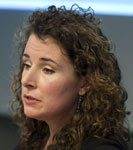 “There are political and economic vulnerabilities that are in fact more important—or seem more important—to the participants of conflict than the physical vulnerability to climate change,” said Clionadh Raleigh at the February 19, 2009, event, “
“There are political and economic vulnerabilities that are in fact more important—or seem more important—to the participants of conflict than the physical vulnerability to climate change,” said Clionadh Raleigh at the February 19, 2009, event, “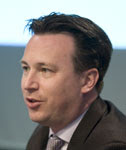 “Climate change is serious,” emphasized Mabey. “It’s a threat multiplier, it will make unstable places less stable—it’s going to change strategic interests, alliances, borders, threats, economic relationships, comparative advantages, the nature of international relations, and the legitimacy of the UN.” In the future, “security policy will need to get more preventive and risk-based because climate change just injects a huge bolt of uncertainty into the future,” said Mabey. He urged the expansion of forward-looking information systems that provide policymakers with the data they need to make decisions at the geopolitical, strategic, and operations levels. He also said security experts should strive to communicate the potential consequences of climate change to decisionmakers.
“Climate change is serious,” emphasized Mabey. “It’s a threat multiplier, it will make unstable places less stable—it’s going to change strategic interests, alliances, borders, threats, economic relationships, comparative advantages, the nature of international relations, and the legitimacy of the UN.” In the future, “security policy will need to get more preventive and risk-based because climate change just injects a huge bolt of uncertainty into the future,” said Mabey. He urged the expansion of forward-looking information systems that provide policymakers with the data they need to make decisions at the geopolitical, strategic, and operations levels. He also said security experts should strive to communicate the potential consequences of climate change to decisionmakers.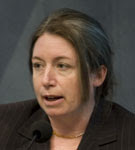 Last year, Burke helped conduct a
Last year, Burke helped conduct a 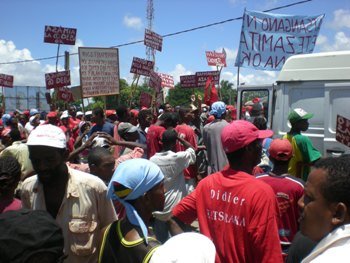 Global cereal production – including stable items like wheat, coarse grains, and rice – is
Global cereal production – including stable items like wheat, coarse grains, and rice – is 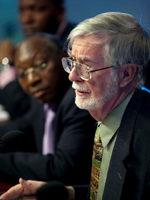 “The ultimate weapon of mass destruction—and perhaps of economic destruction—is the testosterone molecule,” quipped Malcolm Potts at the February 11, 2009, discussion of his new book, “
“The ultimate weapon of mass destruction—and perhaps of economic destruction—is the testosterone molecule,” quipped Malcolm Potts at the February 11, 2009, discussion of his new book, “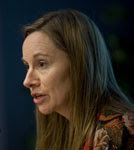
 “
“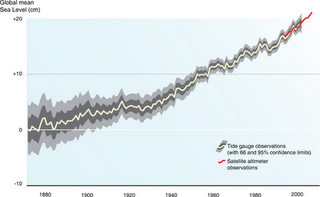 Global sea level is projected to rise between
Global sea level is projected to rise between 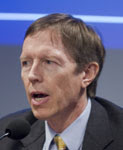 “The whole world is aging, and the developed countries are leading the way,” said Neil Howe of the Center for Strategic and International Studies (CSIS) at a January 27, 2009,
“The whole world is aging, and the developed countries are leading the way,” said Neil Howe of the Center for Strategic and International Studies (CSIS) at a January 27, 2009,  Jackson explained that the developing world is in the midst of the “demographic transition”—the drops in mortality and fertility that generally accompany economic and social development. Since 1970, the developing world’s overall fertility rate has declined from 5.1 to 2.9 children per woman, and its overall population growth rate has dropped from 2.2 percent to 1.3 percent per year, according to Jackson. Additionally, the median age has risen from 20 to 26 years old, “a cause for hope and optimism about the future,” Jackson argued, as countries with more balanced population age structures tend to be
Jackson explained that the developing world is in the midst of the “demographic transition”—the drops in mortality and fertility that generally accompany economic and social development. Since 1970, the developing world’s overall fertility rate has declined from 5.1 to 2.9 children per woman, and its overall population growth rate has dropped from 2.2 percent to 1.3 percent per year, according to Jackson. Additionally, the median age has risen from 20 to 26 years old, “a cause for hope and optimism about the future,” Jackson argued, as countries with more balanced population age structures tend to be  Sciubba praised the report’s comprehensive, policy-friendly approach to demography, but urged the authors to remain true to the nuances of their topic, even in their conclusions and recommendations. “Policymakers like to know what we don’t know and what we do know. And with population aging and national security, often there’s a lot more of what we don’t know than what we do know,” she said. “Going into the future, we need more of an emphasis on places where policymakers can make a difference,” said Sciubba. “Opportunities matter just as much as challenges.”
Sciubba praised the report’s comprehensive, policy-friendly approach to demography, but urged the authors to remain true to the nuances of their topic, even in their conclusions and recommendations. “Policymakers like to know what we don’t know and what we do know. And with population aging and national security, often there’s a lot more of what we don’t know than what we do know,” she said. “Going into the future, we need more of an emphasis on places where policymakers can make a difference,” said Sciubba. “Opportunities matter just as much as challenges.”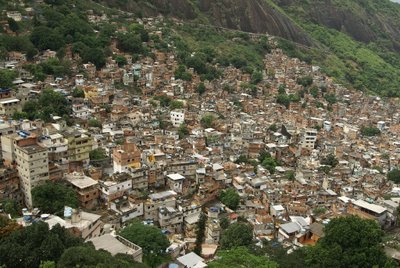 The city of Rio de Janeiro’s plan to erect a
The city of Rio de Janeiro’s plan to erect a 

